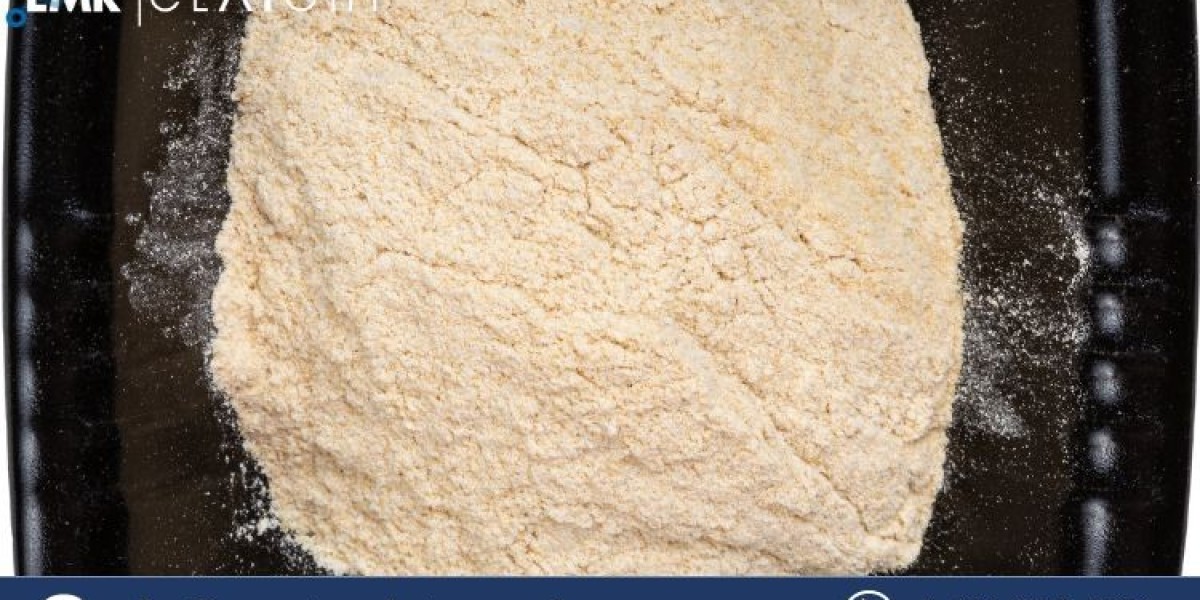The global pectin market size has seen steady growth, fueled by increasing demand for natural, plant-based ingredients across the food, beverage, and pharmaceutical sectors. In 2023, the market volume reached approximately 86.46 KMT (thousand metric tons), and it is projected to grow at a CAGR of 3.1% from 2024 to 2032, reaching about 113.80 KMT by the end of the forecast period. This article delves into the market dynamics, drivers, challenges, and segmentation shaping the future of the pectin industry.
Market Outlook
Pectin, a naturally occurring polysaccharide found in fruits and vegetables, is widely used as a gelling, stabilizing, and thickening agent. The global pectin market benefits from the rising preference for natural and plant-based ingredients, particularly in the food and beverage industry. With a surge in health-conscious consumers and increasing product innovation, pectin is set to experience significant demand, especially in jams, jellies, dairy products, and functional foods. Additionally, the versatility of pectin extends beyond the food industry, with applications in pharmaceuticals, cosmetics, and personal care products.
Report Overview
This report offers a comprehensive analysis of the global pectin market, focusing on market size, growth rate, key drivers, market challenges, and major segments. Additionally, it provides insights into the competitive landscape, recent developments, and emerging trends within the pectin industry.
Market Size
As of 2023, the global pectin market reached 86.46 KMT and is projected to grow at a CAGR of 3.1% over the next decade. By 2032, the market is expected to achieve a volume of approximately 113.80 KMT. This steady growth is attributed to the rising demand for clean-label and functional ingredients in various industries.
Market Dynamics
Market Drivers
Growing Demand for Natural and Clean-Label Ingredients: Consumers are increasingly looking for natural ingredients in food products. Pectin, being a plant-based and label-friendly ingredient, aligns with this trend, thus boosting demand across the food and beverage sector.
Health Benefits and Rising Popularity of Functional Foods: Pectin offers various health benefits, including improved digestion and reduced cholesterol levels. The surge in functional and fortified food demand, especially among health-conscious consumers, is driving the pectin market.
Increased Applications in the Pharmaceutical and Cosmetics Industries: Beyond food, pectin is finding growing applications in the pharmaceutical and cosmetics industries, where it is used as a thickener, emulsifier, and gelling agent. The versatility of pectin across various sectors is expanding its market potential.
Innovation in Product Development: Companies are investing in R&D to develop new and innovative pectin products tailored to specific applications. This includes low-sugar pectin options for healthier products and customized formulations for enhanced functionality.
Key Market Challenges
Price Fluctuations and Raw Material Availability: Pectin is primarily sourced from citrus fruits, and its production is heavily influenced by the availability and price of raw materials. Fluctuations in the citrus crop due to weather or supply chain issues can impact pectin availability and pricing.
Competition from Synthetic Alternatives: Synthetic stabilizers and gelling agents, often more cost-effective, present competition to natural pectin. However, the demand for natural products often mitigates this challenge, especially in markets with a strong preference for clean-label ingredients.
High Production Costs: The extraction process for pectin is relatively complex, and maintaining high-quality standards adds to production costs. This may pose a challenge, particularly in price-sensitive markets.
Segmentation
The global pectin market can be segmented based on:
Type:
- HM (High Methoxyl) Pectin: Typically used in high-sugar applications like jams and jellies.
- LM (Low Methoxyl) Pectin: Suited for low-sugar and low-calorie applications, often found in dairy products and other health-focused foods.
Application:
- Food and Beverage: The largest segment, including jams, jellies, beverages, dairy products, and baked goods.
- Pharmaceuticals: Pectin is used as a gelling agent in pharmaceutical applications, particularly in tablet formulations.
- Cosmetics and Personal Care: Used in lotions, creams, and other personal care products as a thickener and stabilizer.
Region:
- North America
- Europe
- Asia-Pacific
- Latin America
- Middle East and Africa
Recent Developments
The pectin industry has seen several advancements, particularly in the area of low-sugar and customized pectin solutions tailored to specific food products. Many companies, including CP Kelco U.S., Inc. and Cargill Inc., are investing in research and development to enhance product offerings and sustainability. Moreover, several partnerships between pectin manufacturers and food producers are helping to create innovative, health-focused food products.
Component Insights
Type Insights
High Methoxyl (HM) pectin is ideal for high-sugar applications like jams and jellies, while Low Methoxyl (LM) pectin caters to low-sugar, low-calorie applications. The increasing preference for health-conscious products is boosting the demand for LM pectin.
Application Insights
The food and beverage sector remains the dominant application area for pectin, accounting for the largest market share. Pectin is highly valued for its role in creating texture, mouthfeel, and stability in various products. Pharmaceutical applications are also growing, as pectin is used in drug formulations to control release rates.
Regional Insights
North America: North America is a significant market for pectin, driven by strong demand in the food and beverage sector and a growing preference for natural ingredients.
Europe: Europe is a leading producer and consumer of pectin, with a well-established food processing industry that emphasizes clean-label products.
Asia-Pacific: Asia-Pacific is experiencing rapid growth due to increased urbanization, rising disposable income, and a growing awareness of health benefits associated with natural ingredients.
Key Players
Key players in the global pectin market include:
- CP Kelco U.S., Inc.
- International Flavors & Fragrances, Inc.
- Cargill Inc.
- Herbstreith & Fox GmbH & Co. KG
- Naturex S.A.
These companies are focusing on product innovation, sustainability, and expanding their production capacities to meet the growing demand for pectin across different regions.
Market Trends
The pectin market is witnessing trends toward clean-label products, low-sugar options, and customized pectin solutions to meet specific industry needs. The rise of vegan and plant-based diets also fuels demand, as pectin is a suitable gelling agent for vegan products.
FAQs
What is the projected growth rate for the pectin market?
The market is expected to grow at a CAGR of 3.1% between 2024 and 2032.
What are the main applications of pectin?
Pectin is primarily used in the food and beverage sector, especially in jams, jellies, and dairy products, but it also has applications in pharmaceuticals and cosmetics.
Which regions are leading the pectin market?
Europe and North America lead in production and consumption, with Asia-Pacific showing significant growth potential.
What challenges does the pectin market face?
Challenges include price fluctuations, high production costs, and competition from synthetic alternatives.
Who are the major players in the pectin market?
Leading players include CP Kelco, Cargill Inc., and International Flavors & Fragrances, Inc.
What types of pectin are available?
High Methoxyl (HM) pectin is used for high-sugar applications, while Low Methoxyl (LM) pectin is suitable for low-sugar, low-calorie applications.







